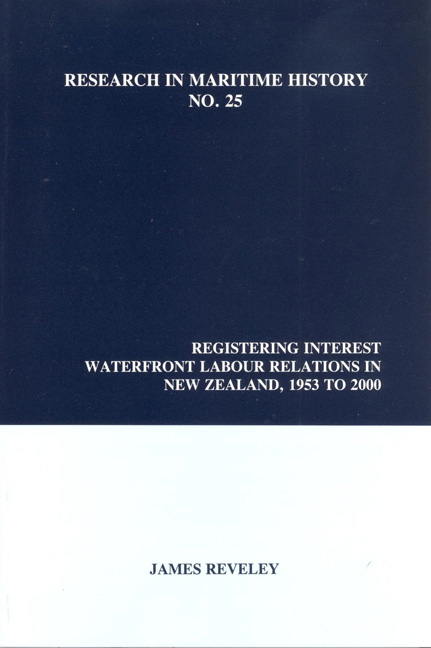Book contents
- Frontmatter
- Contents
- About the Author
- List of Figures
- List of Tables
- Acknowledgments
- Introduction
- Chapter 1 Unions and the Bureau System
- Chapter 2 The Waterfront Employers: Companies and Coordination Mechanisms
- Chapter 3 Labour Relations in the Conventional Cargo Era
- Chapter 4 Negotiating Technological Change
- Chapter 5 Labour Relations after Containerisation
- Chapter 6 Waterfront Labour Reform
- Conclusion
Conclusion
- Frontmatter
- Contents
- About the Author
- List of Figures
- List of Tables
- Acknowledgments
- Introduction
- Chapter 1 Unions and the Bureau System
- Chapter 2 The Waterfront Employers: Companies and Coordination Mechanisms
- Chapter 3 Labour Relations in the Conventional Cargo Era
- Chapter 4 Negotiating Technological Change
- Chapter 5 Labour Relations after Containerisation
- Chapter 6 Waterfront Labour Reform
- Conclusion
Summary
The postwar history of the waterfront industry encompassed significant bouts of technological, organisational and institutional change. My objective in this study has been to identify from this mix the factors that combined to give rise to shifts in the balance of power between employers and unions on the waterfront. Union strength and employer weakness were not simply functions of prosperous economic conditions, but rather were key effects of the institutions that regulated the employment relationship at the ports. Indeed, the pattern of disorganised employers facing powerful unions outlasted New Zealand's long boom by more than twenty years. Throughout, the fortunes of the wharfies’ unions were closely intertwined with those of the Waterfront Industry Commission (WIC), whose occupational registration scheme provided the basis for exerting exclusive closure within the labour market. Yet for any group of social actors, institutional frameworks are never by themselves the final determinants of courses of action or outcomes. Within the institutional context supplied by the WIC, there was a considerable element of strategic choice by the key actors in waterfront labour relations. Ironically, the way union power was exercised in formal bargaining and on the job during a time of technical progress contributed to the demise of the very institutions that sustained this power. If a key insight of the new institutionalist perspective in the analysis of labour relations is that “institutional change…can be regarded as endogenously generated,” the demise of the WIC is a case in point.
As one commentator recently pointed out, attempts to reform Australian waterfront labour practices in 1998 led journalists to inquire of their counterparts across the Tasman how the “big bang” of reform occurred in New Zealand. The cosmological analogy, while colourful, may not be entirely appropriate because the conditions that resulted in waterfront labour reform are clearly identifiable. This book suggests there was path-dependence in the developments that led to the abolition of the WIC, which took the form of a “reactive sequence” of events.
- Type
- Chapter
- Information
- Registering InterestWaterfront Labour Relations In New Zealand, 1953 To 2000, pp. 165 - 170Publisher: Liverpool University PressPrint publication year: 2003



